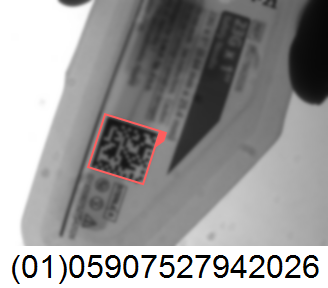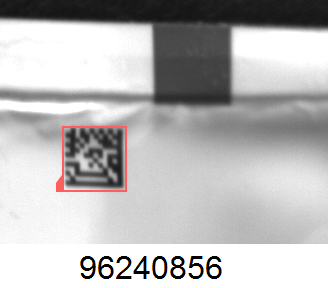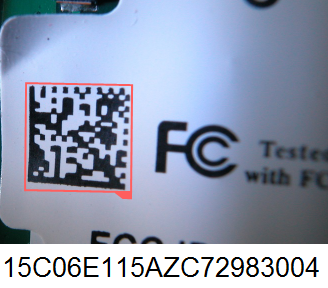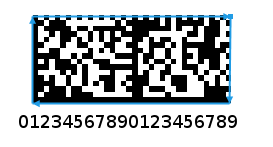Back to Adaptive Vision Studio website
You are here: Start » Filter Reference » Datacodes » ReadMultipleDataMatrixCodes_Deprecated
Detects and recognizes several Data Matrix codes.
| Name | Type | Range | Description | |
|---|---|---|---|---|
 |
inImage | Image | Input image | |
 |
inRoi | Rectangle2D* | Region of interest | |
 |
inRoiAlignment | CoordinateSystem2D* | Coordinate system for the region of interest | |
 |
inCodeParams | DataMatrixCodeParams | Specification of codes that can be found | |
 |
inMaxCodeCount | Integer | 0 -  |
Maximum number of codes to be found |
 |
inContrastThreshold | Integer | 1 -  |
Minimal difference between dark and bright modules |
 |
inAllowMultipleScales | Bool | Specifies whether codes of different module sizes are expected | |
 |
inFlags | Integer | 0 -  |
Undocumented advanced tweaks for difficult cases |
 |
outDataMatrixCodes | DataCodeArray | ||
 |
outCandidates | PathArray | Diagnostic information about detection results | |
 |
outAlignedRoi | Rectangle2D | Input ROI after transformation (in the image coordinates) | |
Description
This filter detects and recognizes data matrix codes on an image.
Supported code types: ECC 200 and ECC 000-140.
Hints
- Connect inImage with the output of your image acquisition filter.
- Specify the range of possible codes on an image by setting the inCodeParams input. The more narrow is the specification, the faster the filter works.
- Set inCodeParams.Polarity to specify whether dark-on-bright or bright-on-dark codes are to be read.
- Specify the range of possible code sizes with inCodeParams.MinRowCount, inCodeParams.MaxRowCount, inCodeParams.MinColumnCount, inCodeParams.MinColumnCount.
- Specify the range of possible module sizes (in pixels) with inCodeParams.MinModuleSize and inCodeParams.MaxModuleSize.
- Set inCodeParams.ExpectedGapSize according to the following rules:
- Zero – no gaps at all (modules are fully filled).
- Small – gaps up to 25% of the module size.
- Medium – gaps up to 50% of the module size; it may require a bigger Quiet Zone.
- Large – gaps up to 75%; comes with no guarantee.
- Modify inCodeParams.MaxRectangleRatio if you expect to work also with non-square codes. The value specifies maximal ratio between the length of the longer side to the length of the shorter side.
- Specify the maximal number of codes on a single image by setting inMaxCodeCount.
- If the codes may appear with different module sizes, also set inAllowMultipleScales to True.
- Set inContrastThreshold to a value, which is lower than minimal difference of pixel values between a dark and a bright module (contrast), but greater than maximal difference of pixel values within one module (noise level).
- If you are having problems with reading codes from low quality images, consider adding image morphology or smoothing.
Examples

DataMatrix on blurry image. |

Low quality DataMatrix code. |

DataMatrix on chip. |

Rectangular DataMatrix code. |
Remarks
Read more about Local Coordinate Systems in Machine Vision Guide: Local Coordinate Systems.
Complexity Level
This filter is available on Basic Complexity Level.
See Also
- ReadMultipleDataMatrixCodes – Detects and recognizes several Data Matrix codes.


